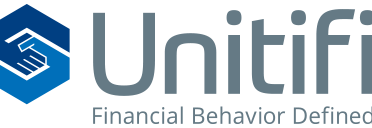
Investor behavioral economics assessment is a tool financial advisors use to understand and predict the investor’s underlying psychological biases that can affect their decision-making process regarding investment choices. By using this assessment, financial advisors can gain insight into how investors view risk, assess opportunities, and react to various scenarios. Advisors need to recognize that not all investors have the same approach or mindset when it comes to investing; some may be comfortable with higher levels of risk, while others prefer more conservative methods. The assessment helps advisers tailor advice and portfolio management strategies based on individual investors’ needs and preferences.
Typically, the behavioral economics assessment complements the traditional investor behavioral assessment and evaluates clients’ risk tolerance and investment goals. By understanding investors’ attitudes and behaviors regarding investments, advisors can tailor advice and strategies that match the individual’s risk preference, timeframe, financial objectives, and other factors. This helps ensure that the investor’s portfolio is tailored specifically to them rather than having an off-the-shelf generic strategy applied.
Behavioral economics and psychometric tools.
As a financial advisor, understanding your client’s attitudes toward money and their risk profile is paramount in helping them achieve their goals. With this knowledge, many advisors now use behavioral economics and psychometric tools to gather data about their client’s behavior. By implementing these techniques, advisors can gain greater insight into how best to guide them through each decision-making process. In this blog post series, we’ll discuss the power that modern psychometric tools can bring to the advising table and how advisors can best leverage it for successful outcomes.
Behavioral Economics is a relatively new branch of economics that attempts to understand the behavior of individuals, organizations, and markets by examining psychology, cognitive biases, and motivation. Psychometric tools are assessments used to measure emotions, attitudes, and beliefs that impact financial decision-making. Financial advisors leverage these two approaches to gain insight into their clients’ risk tolerance, attitude toward money, and financial literacy. By incorporating Behavioral Economics and Psychometric Tools into their practice, advisors are better equipped to provide informed advice tailored to their client’s specific needs and goals.
The Benefits of Using Behavioral Economics and Psychometric Tools with Clients
Financial advisors must have a holistic approach when meeting with their clients in today’s ever-changing economic landscape. By incorporating behavioral economics and psychometric tools into the client experience, advisors can gain insight to help make more informed decisions regarding the client’s finances and risk profile. Behavioral economics help identifies how people think, feel and make decisions regarding money; this includes biases, emotions, and perspectives unique to the individual. On the other hand, psychometric tools help understand the risk profile of a particular investor or group of investors. Therefore, it is vital for prudent wealth management that both the emotional and quantitative sides are taken into consideration when developing investment strategies for clients. With this knowledge, advisors can make better decisions on their clients’ behalf so they can realize their financial goals.
How to Use Behavioral Economics and Psychometric Tools Effectively
Effective use of behavioral economics and psychometric tools is essential in providing quality financial advice. For example, understanding a client’s attitude towards money and their risk profile gives a financial advisor insight into the best strategies to help the client reach their goals faster. Identifying behaviors preventing clients from achieving their goals can also help advisors target areas for improvement. With a strong foundation of behavioral economics and psychometric knowledge, advisors and clients can find better solutions for managing money, taking control of their finances, making wise investments, and ultimately realizing their desired outcomes.
Behavioral economics and psychometric tools offer financial advisors unique resources to evaluate their clients’ financial habits. These tools allow advisors to uncover deep biases, thought patterns, and preferences that drive client money-related decisions. In addition, psychometric assessments provide invaluable insights by measuring variables such as impulse decision-making and risk tolerance. At the same time, behavioral economics uncovers the factors that influence decisions more accurately than standard statistical models. Together, these two techniques enable advisors to understand their clients’ financial behaviors better and develop strategies that produce desirable outcomes for both parties involved.
Leveraging the Power of Behavioral Economics and Psychometric Tools to Create a More Profitable Practice
Leveraging the power of behavioral economics and psychometric tools can be a surefire way to create a more profitable practice. This is because realizing clients’ attitudes towards money and accurately assessing their risk profile gives financial advisors an edge in providing helpful advice and guidance to their clients. This approach allows financial advisors to fully understand the sentiments of their clients, considering different angles, such as the client’s personal goals, investable assets, and expected returns. Ultimately, this sets the basis for constructing banking plans tailored to each client’s needs and preferences. Furthermore, it can serve as a means of retaining loyalty from existing customers while building trust with prospective ones.
As a financial advisor, you can utilize behavioral economics and psychometric tools to gain insights into your clients’ attitudes about money and their risk profile. The advisors must continuously use the assessment process to ensure that the data remains relevant. Remember to keep your communication straightforward and free from technical jargon when incorporating these tools. Encourage your clients to provide open and honest input throughout the assessment process. Explaining why this information is essential allows you to tailor recommendations that best align with their financial goals. With increased understanding, you can enhance trust in client relationships and help them make more informed decisions in the future.
Ultimately, the right combination of psychometric tools and behavioral economics can be invaluable in helping you create an effective wealth management strategy for each client. By incorporating these approaches into your process, you can better assess their financial thinking and habits, gaining insight into their behavior that would have otherwise been impossible. You will also be able to foster deeper connections with your clients, empowering them to build on small successes over time to achieve their long-term financial goals. This iterative approach makes creating meaningful wealth management plans that meet their unique needs easier, effectively positioning both parties for success far into the future. With the right strategy and focus, any advisor can harness the power of behavioral economics and psychometric tools to scale up their client base and pave their way to becoming successful financial advisors!
Features and Functionality of Investor Behavior Assessment Software:
Investor Behavioral Assessment Software is essential for Financial Advisors and Registered Investment Advisors (RIAs) to gain insights into their clients’ financial behavior and preferences. This software can improve the client-advisor relationship and improve investment strategies tailored to individual needs. Here is a comprehensive list of features and capabilities of investor behavior evaluation software. (Often, this is just one module in a larger platform such as financial planning or portfolio management):
- Client Profiling and Risk Assessment: a. Risk tolerance assessment b. Time horizon evaluation c. Investment objectives identification d. Financial goals and constraints analysis, e. Asset allocation preferences
- Behavioral Finance Analysis: a. Cognitive biases identification b. Emotional biases assessment c. Decision-making patterns analysis d. Loss aversion evaluation e. Overconfidence and herding tendencies detection
- Investor Personality Assessment: a. Five-factor model (Big Five) personality assessment b. Myers-Briggs Type Indicator (MBTI) evaluation c. Investor archetype classification d. Communication style preferences e. Learning style identification
- Portfolio Construction and Optimization: a. Personalized portfolio recommendations b. Behavioral-driven asset allocation c. Risk-adjusted performance optimization d. Goal-based investing strategies e. Scenario analysis and stress testing
- Integrations and Compatibility: a. Integration with CRM systems b. Compatibility with financial planning and portfolio management software c. Data import and export capabilities d. API access for custom integrations e. Mobile and desktop accessibility
- Security and Compliance: a. GDPR, HIPAA, and other data privacy regulations compliance b. Secure data storage and encryption c. Two-factor authentication (2FA) and secure login d. Regular security audits and updates e. Role-based access control and user management
- Reporting and Analytics: a. Customizable reporting templates b. Client progress tracking and benchmarking c. Behavioral insights and trend analysis d. Compliance and audit reporting e. Exportable reports in various formats (PDF, CSV, etc.)
- Training and Support: a. Onboarding and training resources b. Knowledge base and user guides c. Webinars and workshops d. Dedicated customer support e. Regular software updates and enhancements












